

Agridisk
Egypt - Alexandria

All about types of chickens and their characteristics & Which chicken breed is best for eggs?
Description: Welcome to a comprehensive exploration of the world of chickens! As intricate as it may seem, the various chicken breeds possess fascinating and frequently subtle differences, cultivated over centuries, reflecting their adaptations for varying regional requirements, tasks, and preferences. This detailed discourse delves into the lineage, unique characteristics, and origin of breeds ranging from the vibrant Bantams to the robust Rhode Island Reds. The journey doesn't stop there as we then look at each breed's unique traits, their egg-laying capacity, their nature, and resilience. With a view to assisting hobbyists, potential small-scale farmers, and the interested general populace, we'll also dissect which breed is right for which purpose, be it egg-laying, meat production, or ornamental exhibition. To ensure that our feathered friends receive the best care, guidelines on care and maintenance regarding diet, shelter, common health issues, and lifespan for different breeds will also be provided. Embarking on a journey through the varied landscapes of chicken breeds can feel like a thrilling tale straight out of a Lewis Carroll novel. The diversity in plumage, size, unique attributes, and intriguing origins can be quite awe-inspiring. With over 500 distinct chicken breeds recognized globally, it's high time to crack open the diversity guide and begin an amazing expedition into the world of chickens. First on the list: the Rhode Island Red. As the name signals, this breed was developed in Rhode Island during the mid-1800s and has become a favorite in many poultry operations for its hardy nature and excellent egg-laying abilities. Its dark red feathers and upright stance are something to behold. From the place of French wine and baguettes, the French Marans breed waves hello. Known for their unique, large, dark chocolate-colored eggs, the Marans breed is highly popular among backyard chicken enthusiasts. Next, say bonjour to the charming French Bresse chicken. As France's national treasure, the Bresse is renowned for being one of the best-tasting chickens worldwide. It sports white plumage, blue legs, and a distinctive red crest. Let's not forget the stout and fluffy English breed, the Orpington chicken. Produced in Orpington, Kent, by William Cook in the 1880s, this breed has won hearts with its great meat quality and adept egg-laying capabilities. Its gentle demeanor and fluffy plumage usually come in black, blue, or lavender hues. Darting all the way to the East, we find the Silkies. Originated in China, Silkies are treasured for their sweet temperament, unique feathering texture (similar to silk, hence the name), and a peculiar black pigmentation that runs from their feathers right down to their bones. A sprinkle of whimsy is definitely present in this breed! Filled with proud vigor, the Japanese Onagadori boasts extremely long tail feathers that can stretch over 30 feet in some cases! Historically, these were watched over by dedicated tail attendants in Japan. This breed is a fascinating reminder of how different these fowls can look and behave. Lastly, the Sussex chicken from Southeast England deserves a nod. Known for being great layers, Sussex chickens are the epitome of a dual-purpose breed with their equally good meat production. Sporting a variety of plumages from white, light brown to speckled, they make for a flamboyantly eclectic sight. The world of chicken breeds is evidently as colorful as it gets, full of fascinating traits, distinct origins, and fantastic characters. It goes to show that nurturing a hobby like this breaches the boundaries of just filling a backyard—it's a doorway to a world full of wonders, where every breed holds an exciting new tale to unravel. So you're experienced with the Rhode Island Red, the French Marans, the Orpington, and the enigmatic Silkie among others. It's fascinating indeed to delve deeper and explore the diverse world of chicken breeds, each one adding a new layer to the knowledge cake of this engaging hobby. Allow us to steer this poultry parade towards other intriguing chicken inhabitants, arming you with a surplus of chirpy information. Leghorn Chickens — With Italian heritage that dates back to the Roman times, Leghorns are laudable for their prolific egg-laying abilities. They are known for laying white eggs, up to six or seven a week. Leghorns are small to medium-sized chickens, active, non-sitters, and can be somewhat flighty, often preferring free-ranging to coop confinement. Plymouth Rocks — Casually referred to as 'Bars Rocks' due to the unique striped pattern of their feathers, these birds are easygoing and friendly, making them great backyard companions. Plymouth Rocks are renowned for their dual-purpose nature — they provide a substantial quantity of both eggs and meat. The Araucana — Hailing from South America, the Araucana breed is notable for its beautiful and distinct characteristic: 'rumpless' — a missing tail on its figure. Besides this intriguing physical trait, it's one of the few breeds that lay blue-shelled eggs, giving egg collectors a dash of color variety in their collection. Wyandottes — This North American breed is a true multitasker. Wyandottes mightily fulfill their dual-role: they provide a good amount of meat and also lay an outstanding number of brown eggs. They're often admired for their attractive 'laced' feather patterns, rounding out their contribution to both beauty and utility. The Australorp — An Australian breed bred primarily for egg-laying, the Australorp is a docile, easy to handle bird you might love to have around your backyard. This breed set a world record for egg production, making it an exceptional addition to any egg-enthusiast's flock. The Frizzle — A nod to birds with a personality, the Frizzle stands unique with curls and frizzles on its feathers giving it a fluffy appearance. This breed is more about the visual appeal, although they do lay a decent number of small to medium-sized eggs. Every flock can use a bit of pizzazz, and that’s where a Frizzle might fit right in! Polish Chickens — Known for their charming, feathery head crest, Polish Chickens are a playful aesthetic addition to any coop. Although they aren't prolific egg layers, their quirky personality traits and distinctive look make them prized show birds and a joy to have around. These are just scratching the surface of the rich diversity that the poultry world offers, but every exploration has to begin somewhere. This hobby, like any other, thrives on continuous learning and unending curiosity. Each chicken breed gives us a unique blend of characteristics and charm, just waiting to strut into your backyard and roost in your heart. Exploring the world of chicken breeds can be quite the journey. There are breeds optimized for meat, some for egg laying, and others sure to make a splash at chicken shows with their distinctive feathers and colors. Later on, it's all about the Leghorns, Plymouth Rocks, Araucanas, Wyandottes, Australorps, Frizzles, and Polish Chickens, each as unique and essential as the last. Renowned for their prolific egg-laying, Leghorn Chickens are nothing short of an egg-laying powerhouse. Their ability to lay a substantial quantity of white eggs, averaging between 200 to 300 per year, makes them top contenders in the egg-laying industry. A chicken of this breed is a lively and active forager, often found diligently searching for insects and seeds. Then you have the Plymouth Rocks, known for being the quintessential jack of all trades in the realm of chicken breeds. These birds lend themselves well to both meat and egg purposes, producing a substantial quantity of meat coupled with a decent amount of large, brown eggs. Their easy-going personalities make them a great addition to any backyard coop. The Araucana chicken breed might seem standard at a glance, possessing similar characteristics to many other breeds. However, these native Chilean birds hold a rather cryptic secret. Araucanas are known for their ability to lay blue-shelled eggs, a trait that sets them apart from the rest. The colorful eggs add a unique touch to any egg basket. Next up are the versatile Wyandottes, a chicken breed known for their resilience and sturdy nature. A Wyandotte isn't just about flash and feathers; they're multitaskers, offering a solid balance between egg and meat production. These striking birds lay a steady supply of brown eggs while also boasting a desirable amount of meat. The Australorp breed hails from Australia, with their name being a shortened form for Australian Black Orpington. A piece of chicken trivia for all the hobbyists: an Australorp holds the world record for egg-laying with a whopping 364 eggs in 365 days. Now, that's practically an egg day! The Frizzle breed is one that catches the eye immediately. A Frizzle isn't bred for its egg-laying or meat production abilities, but for its distinctive look. The chicken's feathers noticeably curl backward, providing the chicken a fluffy, frizzled appearance, hence their name. This breed adds flair and aesthetic charm to any chicken collection. Last but not least, we have the delightful Polish Chickens. Often mistaken for a turkey because of the large, bountiful crest of feathers adorning their heads, Polish Chickens are exceptional show birds. Although they do lay a decent amount of eggs, they are mostly kept for ornamental purposes due to their entertaining personalities and attractive crests. In diving deeper into the rich world of chicken breeds, it's clear that each breed brings their own distinct contribution, expanding the colorful tableau of possibilities. Whether looking to optimize for meat, eggs, or just for looks, there undoubtedly exists a chicken breed distinctly tailored for the purpose. Mentioning the term 'chicken breeds' might stir images of delightful egg-producing entities strutting about and presenting an animated live performance. But did you know individual needs classify chickens? Each breed features personalized attention in terms of care and maintenance. Discover below how seven different breeds deviate in terms of care. Renowned for their egg-laying prowess, they adore open spaces. The free-range environ is their favorite. In comparison to other breeds, they require less feed, making them low maintenance. However, they aren’t particularly fond of being confined, so it's crucial to ensure they have plentiful space. are sought-after dual-purpose birds, valued for eggs and meat. They are happy birds and easy to take care of. However, they're prone to obesity, so it's vital to regulate their diet and ensure they acquire adequate exercise. Like Leghorns, they too relish the free-range life, so keeping them closed up all the time won't work. famed for their unique blue-shelled eggs. Araucanas necessitate secure housing to guard them against predators as they can't fly. An interesting attribute of this breed is their propensity to be broody, meaning they desire to sit on their eggs, which needs monitoring. another dual-purpose breed, generate meat and brown eggs, and are known as the hardy breed. They can withstand cold climates due to their dense feathering but would still need shelter during excessively cold weather. Regular health checks are mandatory since they are susceptible to infestations because of their thick plumage. Travelling down under, you’ll hear about the Australian breed Australorp. These strong, healthy birds once held a world record for egg production. While they respond well to common care routines, they do favor cooler climates and might require shade during hotter months. Onto the Frizzles! Characterized by curly feathering, their unique appearance demands additional care. They're more susceptible to cold weather due to their feather structure, so owners need to ensure a warm coop during harsh winters. Their unique feathers are prone to breakage and require gentle handling. Lastly, the style-conscious Polish Chickens are adored as show birds because of their appealing crests. These crests require care to keep them clean and bug-free. Their vision can be restricted, which predisposes them to potential danger, so a secure surrounding to avert predator threats is essential. Remember, providing appropriate care routine according to their specificities ensures the welfare of these amazing creatures. Good luck with your chicken-care journey! Embrace the experience of what it takes to maintain varied breeds; the reward is in their happy clucking and those fresh, delicious eggs. Comprehending the broad spectrum of chicken breeds allows us to appreciate not just their physical similarities and differences, but also the diverse roles they play in our habitats and our lives. The vibrant Bantam, the sturdy Rhode Island Red, and all breeds in between, each has a unique lineage and distinct characteristics, with suitability for various purposes. The knowledge of these unique traits aids us in chooing the right breed for our specific needs. Finally, understanding the needs of each breed in terms of diet, housing, common health issues, and overall care enhances our ability to maintain these special creatures, ensuring their longevity, productivity, and well-being. Let this newfound knowledge foster a stronger bond between you and your feathered companions, regardless of whether you are a hobbyist, a small-scale farmer or someone simply fascinated by the world of chickens. Imagine the delight of a fresh, farm-laid egg on your kitchen table every morning — a symbol of self-sufficiency and a connection to the simpler joys of life. But not all chickens are created equal when it comes to egg-laying prowess. The journey to frequent egg delights begins with selecting the right breed, but what makes a chicken breed the best for egg production? We set out to explore the fascinating world of poultry to inform the enthusiast and the backyard farmer alike on which feathery friend will fill their baskets with the most eggs. We'll delve into the remarkable traits that characterize the best egg-layers, revealing not only the quantity but the quality of their precious oval offerings. Together, we will uncover why some breeds outpace others in the race of egg production and how you can foster an environment that ensures the clucking and pecking in your backyard is as fruitful as it is joyful. Ever wondered what makes a chicken an egg laying superstar? Finding the right breed is like hitting the jackpot in the egg-producing world. Here's the lowdown on the traits of the most prolific egg-laying chickens, so you can choose a feathery friend that'll keep your egg basket full. First, let's talk about "breed" because that's the biggie. Not all chickens are created equal when it comes to popping out eggs. Hybrid breeds, such as Golden Comets, Red Stars, or Black Stars, are like the Olympians of egg laying. They're the outcome of cross-breeding and have this incredible oomph! They'll gift you with an egg almost every day. But, it's not just hybrids, some purebred chickens are also amazing at laying eggs. Classic names to remember are the Leghorn, Rhode Island Red, and the Sussex. They've been the go-to for egg enthusiasts for ages and with good reason. Now, let's get a peep into their traits. A prolific layer has a well-rounded body – think of it as the athlete's build of the chicken world. They've got strong legs, a broad back, and they're generally on the move, foraging and bustling about. A happy, healthy chicken equals more eggs, so activity level matters. Another thing is their comb – that wobbly red bit on top of their head. It should be bright and perky, a sign they're in good laying condition. Take a gander at their eyes too; bright and alert eyes mean your chicken's probably a good layer. What about their feathers? Trust us, feathers tell a story. A decent egg-layer often has a neat appearance, but don't be surprised to spot some wear and tear, particularly around their back end. It's just part of the egg-laying hustle. Last but not least, temperament. Think easy-going, not the flighty, skittish types. Chill chickens that don't mind being part of a flock are often the ones acing the egg game. Here's a golden nugget before you scuttle off to find your egg champions: It's not just about finding the right breed with the right traits, it's about taking top-notch care of them. Fresh food, clean water, room to roam – it's all part of the road to egg heaven. So, whether you're in it for the farm-fresh omelets or the joy of having these clucky companions strut around, knowing these traits will have you cracking the egg code in no time. Now, go forth and find your feathered egg-machines! Delving deeper into the world of egg-laying chicken breeds, it's essential to consider the climate adaptability and egg characteristics that influence a poultry enthusiast's choices. Certain breeds excel in particular environments and merit a closer look. When it comes to weather resilience, the Australorp is a shining star. Hailing from Australia, this breed is renowned for its ability to lay consistently in various climates, both hot and cold. Originating as a cross between the Orpington and native Australian breeds, Australorps are sizable, friendly chickens known for their glossy black feathers and high egg yield, often averaging around 250 eggs per year. Next on the list for those who prefer eggs with a bit of colorful flair is the Ameraucana. This breed is a treat for the eyes with its puffy cheek feathers and slate-blue legs. Most appealingly, it produces beautiful blue eggs. While not as prodigious as some hybrid breeds, Ameraucana hens lay a respectable number of eggs, generally around 150-200 annually. For aficionados leaning toward smaller-sized chickens, the Bantam variety shouldn't go unnoticed. Though not as famed for egg production as their larger cousins, Bantam breeds like the Silkie Bantam lay smaller eggs but with surprising frequency, given their size. They are also well-loved for their calm disposition and pet-like qualities, which endear them to hobbyists and families alike. Egg size can also be a deciding factor. For those craving hefty eggs, the Orpington presents as an ideal breed. These fluffy, friendly birds lay less frequently than some other breeds but compensate with the size of their eggs. Large and brown, their eggs are not just about quantity but quality and size. In sum, adding to our consideration the climate adaptability, egg color, and size preferences, several breeds stand out. Whether it's the hardy versatility of the Australorp, the unique egg color of the Ameraucana, the Bantam's appealing size and temperament, or the Orpington's large eggs, there's an egg-layer to align with every enthusiast's specific interests. By selecting the breed that best aligns with one's conditions and desires, a rewarding and productive hobby can flourish. Explore, engage, and may every coop be a basket full of the eggs that dreams are made of! Continuing from where we left off, it's not just the breed of chicken that's essential for egg production; how these feathered friends are cared for plays a vital role in the number and quality of eggs they lay. Exceptional egg production begins with providing an environment that meets all of the chickens' needs. First up, let's talk about housing. Chickens need a safe, predator-proof coop that shields them from the elements. It should be well-ventilated to keep air fresh but also snug enough to protect them from extreme weather. Inside, there should be plenty of space for all the chickens to roost comfortably without crowding and stress because stress can lead to a drop in egg production. Nest boxes should be cozy and filled with clean, soft bedding to encourage laying and to help keep eggs clean. Now, onto the light. Chickens need about 14-16 hours of light per day to produce eggs efficiently. When natural daylight is short, especially in winter, adding some artificial lights inside the coop can keep egg production steady. Food is another big deal. Laying hens need a balanced diet rich in proteins, vitamins, and minerals. A high-quality layer feed is perfect since it has the right mix of nutrients to support egg production. Don't forget about calcium - hens need plenty to form eggshells. Offer a separate container of oyster shell or ground limestone to give them that extra calcium boost. Water, of course, is just as important. Clean, fresh water should be available at all times. If water gets too hot, too cold, or dirty, hens might not drink enough, which can hurt egg production. Let's not forget exercise. Yes, chickens need their workouts too! A safe outdoor space to scratch, forage, and stretch their legs keeps chickens happy and healthy. When chickens are active, they have better circulation and muscle tone, which contributes to the overall egg-laying process. Then there's the matter of health care. Parasites like mites and lice can cause chickens stress and illness, which can mess with egg production. Regular coop cleaning and dust baths for chickens can prevent these pests. Also, keep an eye out for signs of sickness. Catching issues early can keep the whole flock in top form. Remember, every chicken is different. Some might lay eggs like clockwork, while others might be a bit more sporadic. Keep track of their laying patterns, and be ready to adjust care as needed. Happy, healthy chickens mean more delicious eggs, and there's nothing quite like the joy of collecting a fresh batch of eggs from your very own flock. Whether you're an enthusiast or a casual hobbyist, understanding and committing to proper chicken care will undoubtedly lead to a rewarding experience for both you and your feathery friends. Armed with knowledge of the finest egg-producing chicken breeds, popular choices among poultry enthusiasts, and best practices for care and management, you stand poised to embark on a rewarding journey of raising hens that are both prolific and content. The harmony between a well-chosen breed and tailored care will pave the way for basketfuls of eggs and the satisfaction of a coop well-kept. As we dwell among these feathered companions, we not only reap the tangible reward of their labors but also the intangible joy of connecting with the timeless tradition of hen-keeping. May your coop be merry, your care be wise, and your breakfast table never know the absence of the humble yet extraordinary farm-fresh egg. People also ask : Embarking on the journey of raising chickens for their egg-laying prowess invites a fascinating delve into a world where feathered friends become both companions and contributors to self-sustaining practices. There's a rich tapestry of breeds to choose from, each with its unique set of attributes that cater to the diverse needs and desires of chicken keepers. From the prolific lay rates of the Leghorn to the charmingly speckled eggs of the Sussex, and the robust Rhode Island Red, the selection process is an exercise in balancing aesthetics, temperament, and productivity. Understanding these feathery dynamos is not just about selecting the right breed, but also embracing the responsibility of care that accompanies the joys of harvesting your very own home-laid eggs. When the early bird gets the worm, you can bet it’s one of the superstar chickens known for their exceptional egg-laying capabilities. These feathery friends are the champions of the coop, and enthusiasts everywhere rave about a few select breeds that really deliver the goods. If you're looking to fill your basket with fresh, home-grown eggs, then it's essential to know which breeds to invite into your backyard. Let's talk layers, shall we? The Leghorn, for instance, is like the sprinter of the egg-laying world. Originating from Italy, these chickens are the Olympians in the egg count column, often racking up to a whopping 250-300 large, white eggs per year. They’re the go-to for commercial operations, but backyard hobbyists love them for their prolific production and feed efficiency. They're hardy, they're spry, and boy, do they lay! Another fan favorite in the egg-laying league is the Rhode Island Red. This breed is a bit like the trusty pickup truck - reliable, resilient, and all-American. Known for their deep red feathers and easy-going nature, they lay a respectable 200 to 250 brown eggs annually. They’re not just good layers; they've got personality and are robust, making them excellent for newbies in the poultry sphere. And for those wanting a quaint, picturesque coop, you can’t go wrong with the charming Plymouth Rock. With their striking striped feathers and cool, calm demeanor, they lay a sweet sum of about 200 eggs per year while doubling as delightful companions in your garden endeavors. Selecting the right chickens for egg-laying is like picking the dream team – you want the best players on your side. Whether you fancy white eggs or brown, large quantities or robust temperaments, there's a breed tailored to your egg-spectations. Now, go ahead, make your choice and watch as your coop becomes the envy of egg enthusiasts everywhere! When it comes to maximizing egg production beyond choosing the right breed, proper nutrition plays a pivotal role. Chickens need a balanced diet rich in protein, calcium, and other essential nutrients to lay consistently. Starting off, layer feed is the way to go since it’s crafted to support egg-laying hens with the right blend of protein, usually 16-18%, along with vital vitamins and minerals. But it's not just about the feed; the little extras count too. Don't shy away from offering a hearty mix of kitchen scraps, garden clippings, and even the occasional handful of mealworms or other insects for a protein boost. Calcium supplements can come in handy too, whether it's oyster shells available on the side or crushed eggshells from your kitchen - making sure they're baked and crumbled to avoid any potential for egg-eating behavior. The living quarters are equally crucial for keeping production on point. Chickens need a clean, safe space free from pests and predators where they can rest and lay eggs. Coops must be spacious enough to avoid crowding and stress, with one nest box for every three to four hens, softly lined with straw or shavings. Speaking of stress, it's a big no-no for optimum egg laying. Environmental stressors like loud noises, sudden changes, or aggressive flock mates can quickly tank egg production. Regular checks and a calm environment help maintain a steady laying schedule. Lastly, it’s all about the light. Hens are sensitive to day length, and egg production is tied to the number of daylight hours. Aim for 14-16 hours of light daily to keep those eggs coming. It doesn’t take much – a simple bulb on a timer can work wonders during shorter winter days. Sure, natural breaks in laying are normal as seasons change, but with these tips, the baskets won’t stay empty for long. Just remember, patience is key! Cloth feed bags might not fill up overnight, but dedication and good care always yield results. Happy hens mean plentiful eggs, and isn't that every poultry enthusiast's dream? Keep the coop happy, the feed nutritious, and the light regular, and watch as the coop’s bounty grows! Stepping into the role of a caretaker for egg-laying hens is a commitment that extends beyond admiring the variety and frequency of eggs provided. It is a lifestyle shaped by attentiveness to the needs and health of these creatures, which, in return, offer more than just eggs—they enrich our lives with their presence and inadvertently teach us the value of nurturing another form of life. The shared journey with your egg-laying hens doesn't only grant you the freshest of breakfasts but also weaves into the narrative of your daily routine, a story of care, connection, and the cyclic bounty of nature.All about types of chickens and their characteristics & Which chicken breed is best for eggs?
Types of chickens and their characteristics
Different Chicken Breeds
A Colorful Spectrum of the Chicken Kingdom: Discovering Breeds and their Origins
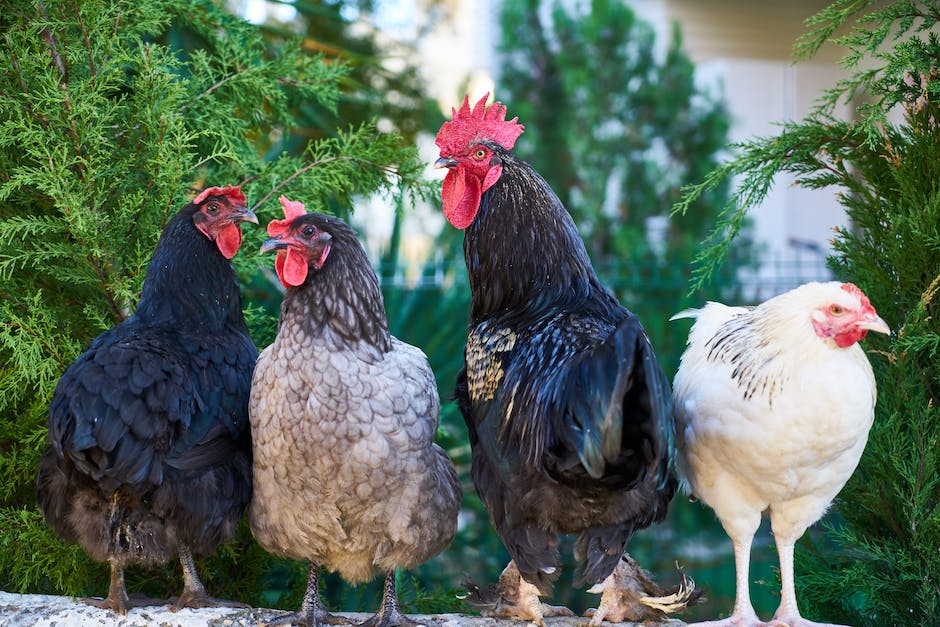
Characteristics of Each Breed
Discovering Intriguing Idiosyncrasies: Chicken Breeds Beyond the Ordinary

Breed Suitability for Various Purposes
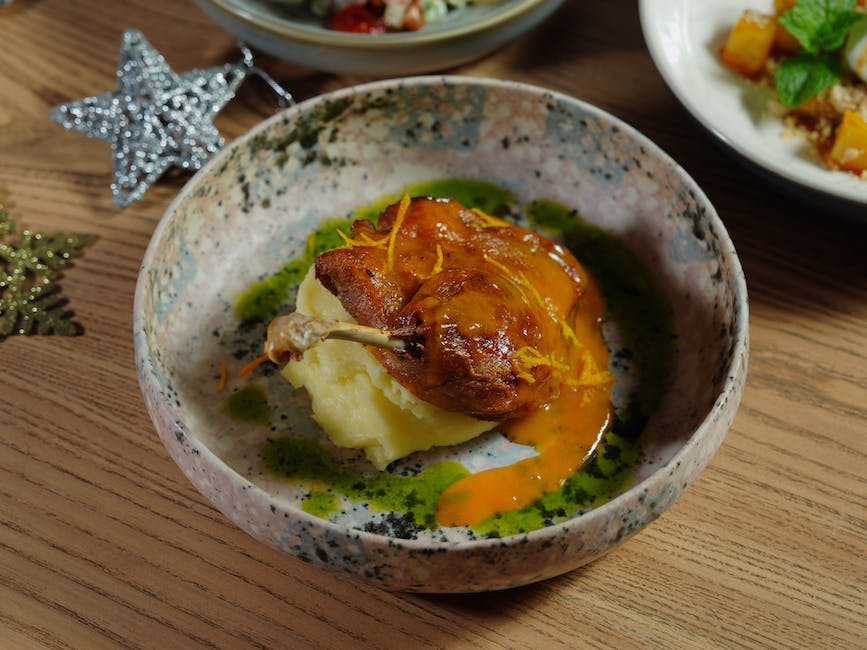
Care and Maintenance of Different Breeds
Starting with Leghorn Chickens
The Plymouth Rocks
Next are the Araucana chickens
Wyandottes
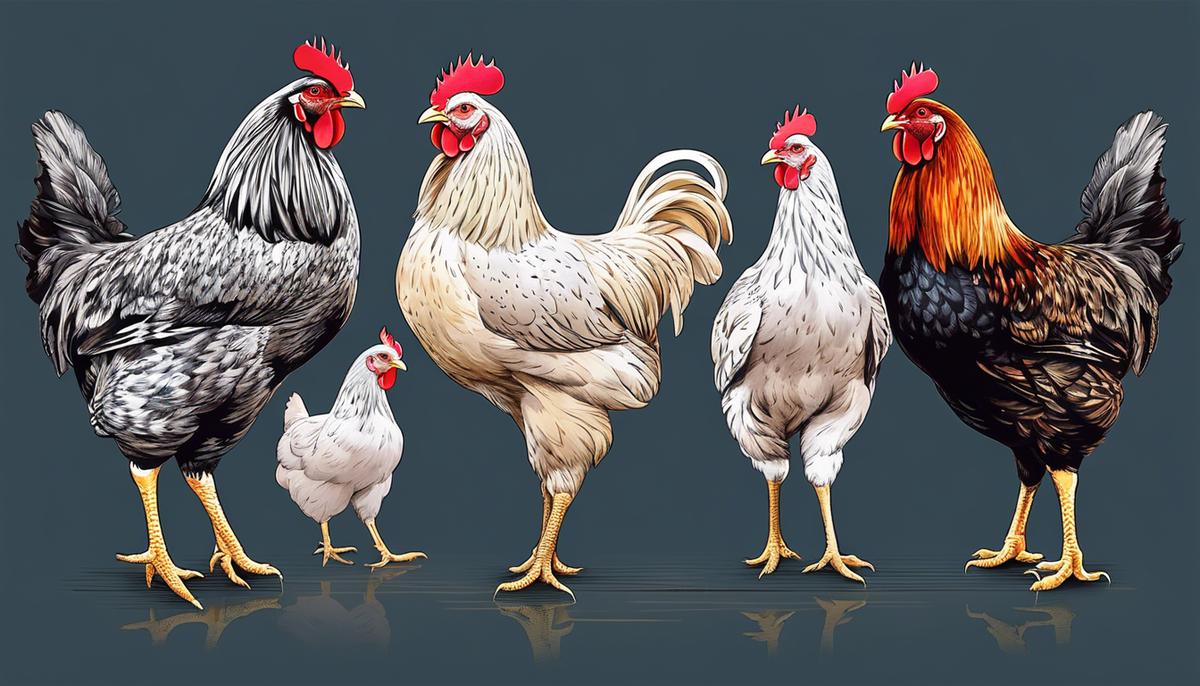
Which chicken breed is best for eggs?
Characteristics of High-Egg-Producing Breeds
The Secret Formula to Prolific Egg Layers: Picking Your Perfect Chicken

Most Popular Breeds for Egg Production
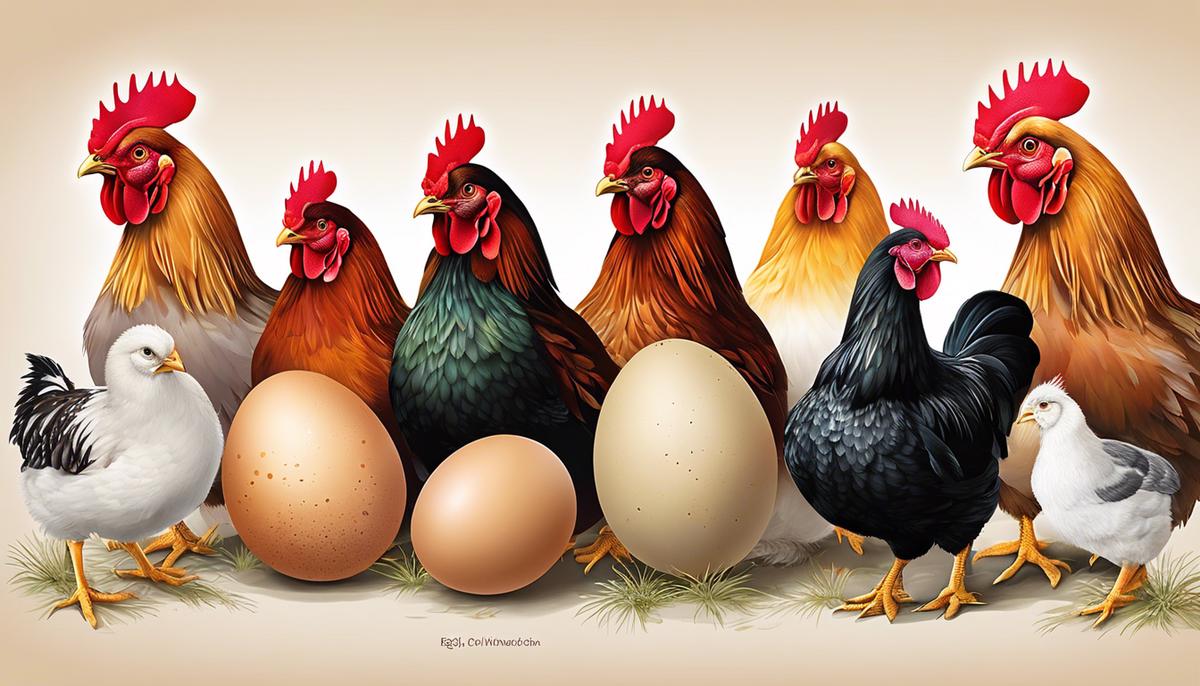
Care and Management for Optimal Egg Production
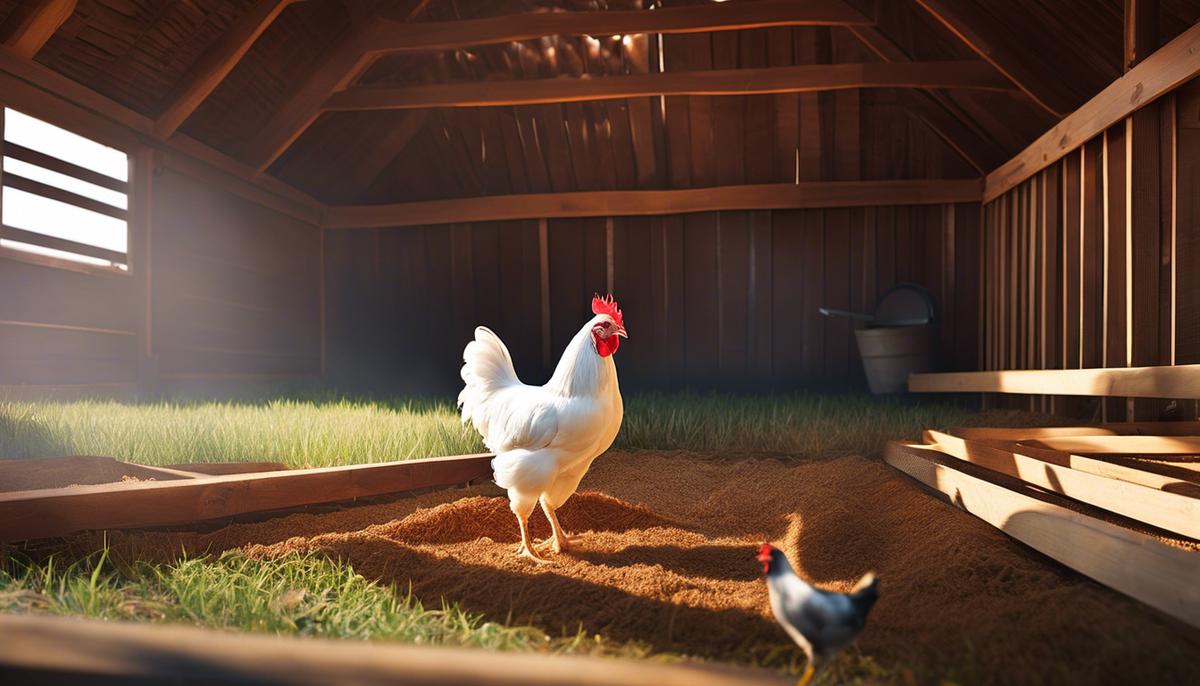
What kind of chickens lay eggs?
Types of Egg-Laying Chickens
Crackin' the Code on Egg-Laying Chicken Breeds
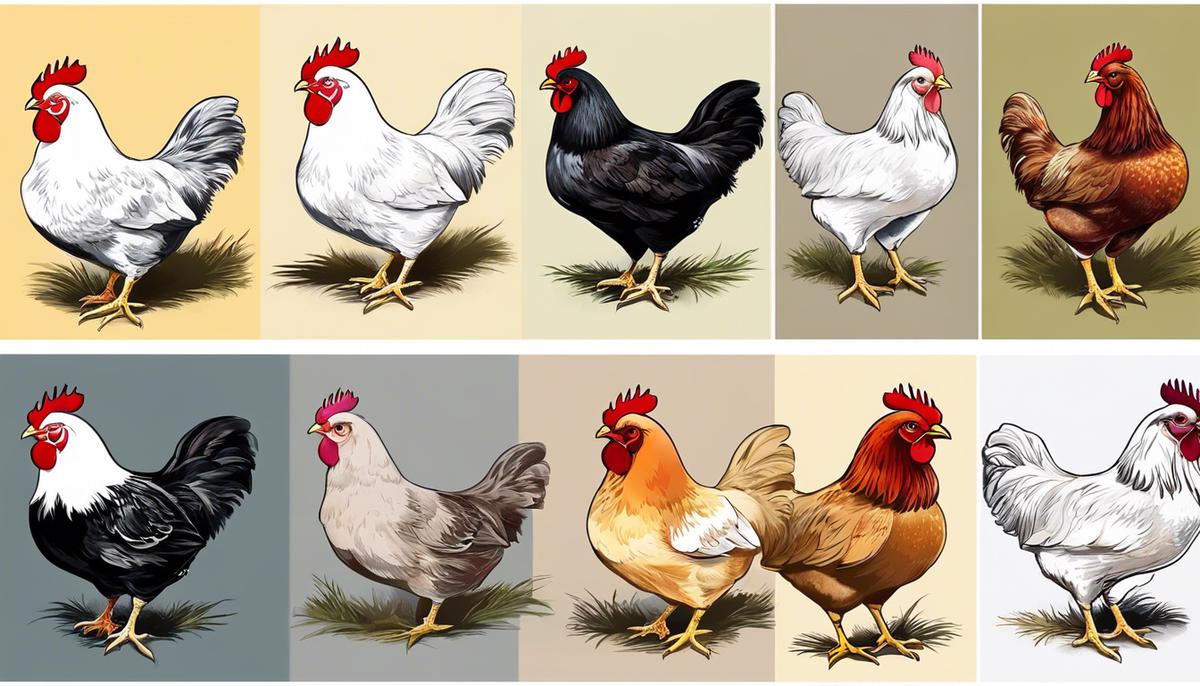
Caring for Egg-Laying Hens